It’s a simple fact: we eat with our eyes first. Beautiful presentation allows you to begin anticipating the flavors of a given dish before you take the first bite, heightening anticipation and the overall dining experience—which is where the importance of plating comes into play. It goes beyond mere culinary skill; it’s an art form that combines taste, aesthetics, and storytelling.
“When plating, you have to let the food speak to you,” Chef Jessie Kordosky (General Mills Foodservice) told Catersource during a recent food shoot. “The plate should be surprising and delighting, while enhancing the experience of eating it.”
Plating for service and plating for photography require two different approaches, so let’s take a look at each kind.
Plating for service
The way you present your food is what tempts customers to try a dish. We eat with our senses: what we see, smell, and feel.
“Exquisite plating transforms a meal into a multisensory experience. It captivates the eyes before tantalizing taste buds, enhancing overall satisfaction and leaving a lasting impression,” says Sebastien Centner with Eatertainment Catering & Events.
There’s so much consideration that must go into every aspect of successfully creating the perfect plate, from the size of the components on the dish to the type of cut to the color and consistency of sauces or toppings.
“Catering is as much about art as it is about food. Professional caterers use plates as their canvas and ingredients as their palette, showcasing their creativity and expertise through meticulously arranged dishes,” Centner says.
A few tips for plating, according to Lightspeed, include:
- Create height on the plate
- Cut meat horizontally
- Play with textures
- Use contrasting colors
- Choose the right plates
- Serve smaller portion sizes
- Use edible garnishes and decorations
Plating for the camera
When it comes to plating techniques for food photography, the approach is slightly different. According to food photographer Leigh Loftus there are several methods that can enhance the overall visual appeal of the dish. Commonly used techniques include:
- Layering: Create depth and visual interest by layering different components of the dish, such as stacking ingredients or placing them in overlapping arrangements.
- Garnishes: Incorporate garnishes like herbs, micro-greens, edible flowers, or sauces to add color, texture, and a touch of freshness.
- Negative space: Utilize negative space by leaving empty areas on the plate to provide breathing room and focus on the main subject.
- Contrast: Play with contrasting colors, textures, and shapes to make the dish visually striking. For example, pairing a vibrant sauce with a neutral-colored protein can create an appealing contrast.
- Artful placement: Position the food thoughtfully on the plate, considering angles, curves, and asymmetry to create visual flow and balance.
- Stack and lean: Stack certain ingredients like pancakes, cookies, or sliced vegetables to give the dish height, and lean them against each other for a dynamic composition.
- Use props and utensils: Incorporate complementary props or utensils related to the dish, such as a cutting board, knife, or spoon, to add context and visual interest.
“Remember, plating techniques can vary depending on the type of cuisine and the desired style or theme,” says Loftus. “It’s essential to experiment, be creative, and find the techniques that work best for highlighting the unique qualities of each dish.”
Check out the accompanying images for some inspiration to help perfect your next plate.
“Perfect plating isn’t just a trend, it’s a fundamental aspect of success in the catering industry,” Centner says. “It’s the bridge between culinary craftsmanship and visual artistry, ensuring that each event becomes a sensory delight that clients and guests will cherish and remember.”
Plating Styles
There are several different approaches to plating. According to Chef George Zappas, these are the plating styles most commonly used by chefs.
Minimalist
This style of plating emphasizes simplicity and minimalism. It typically features one or two main ingredients arranged cleanly and straightforwardly on the plate.
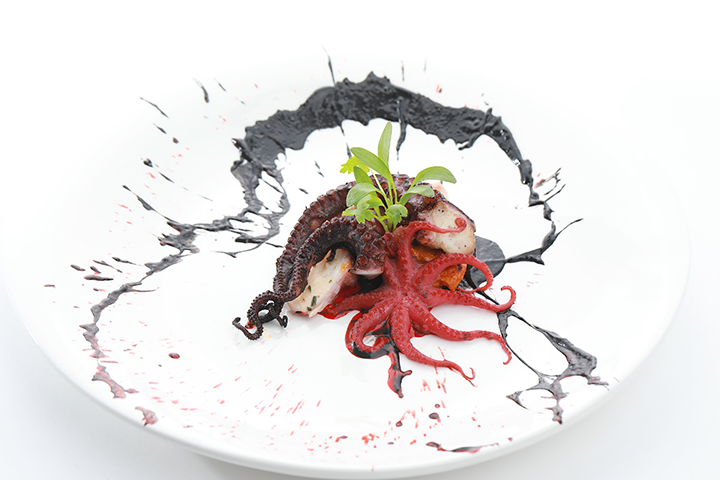
Romanesco pulpo with a splash of red and black squid ink | Fairmont The Queen Elizabeth | Photo courtesy Fairmont The Queen Elizabeth
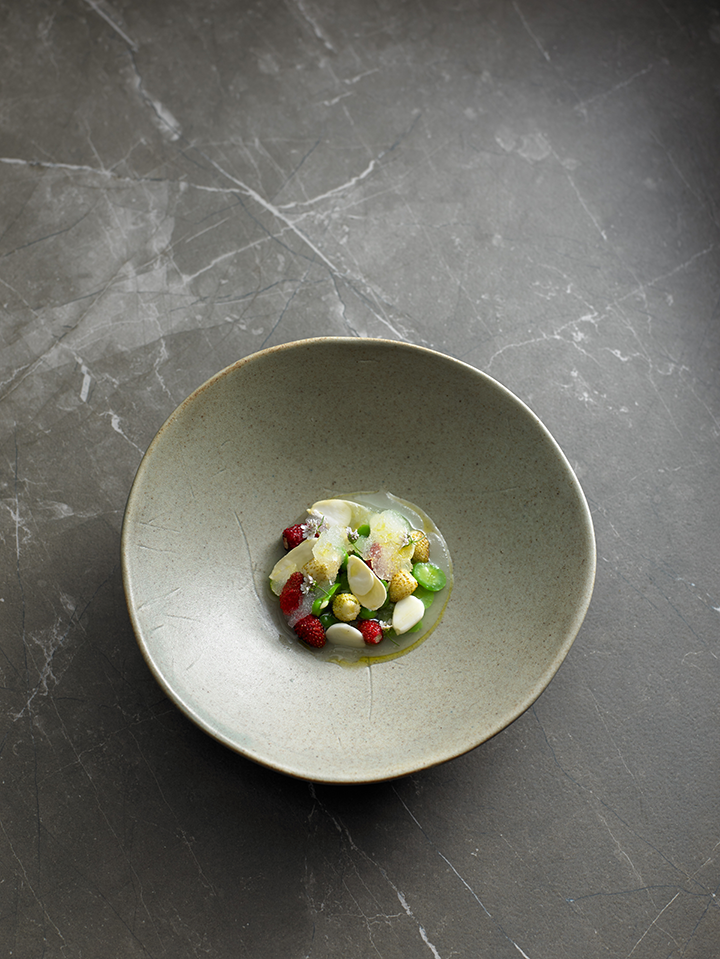
Chilled broth of broad bean, green almond and strawberry, fig leaf, and yogurt whey | Brae Restaurarnt | Photo courtesy Colin Page
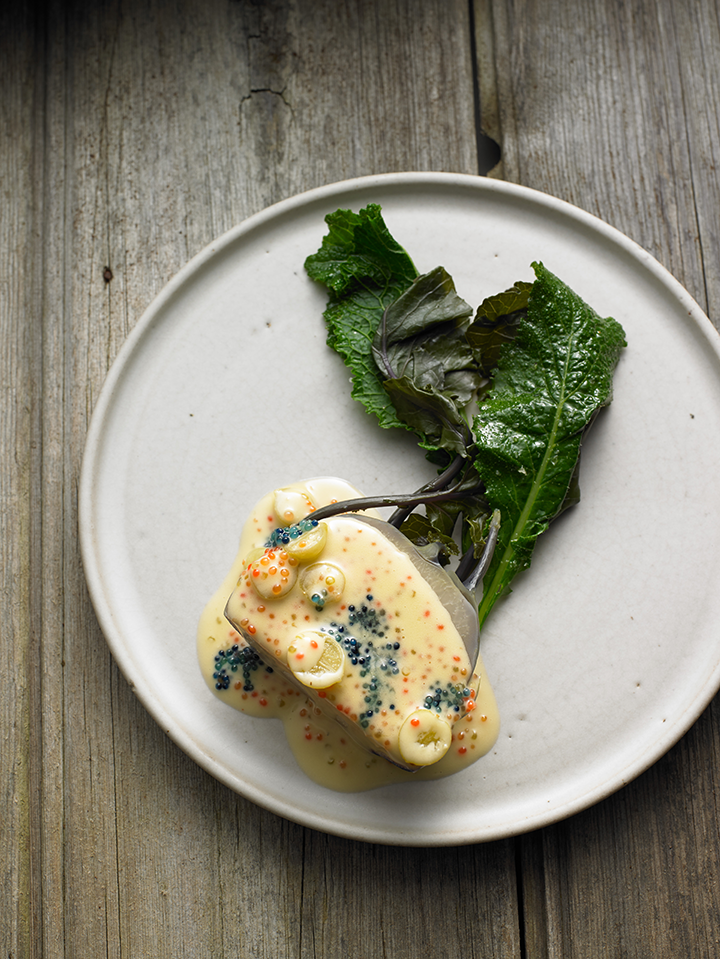
Kohlrabi and scampi roe, desert lime, and crustacean butter | Brae Restaurant | Photo courtesy Colin Page
Garnish-focused
This plating style heavily emphasizes using garnishes and other decorative elements to enhance the dish’s presentation.
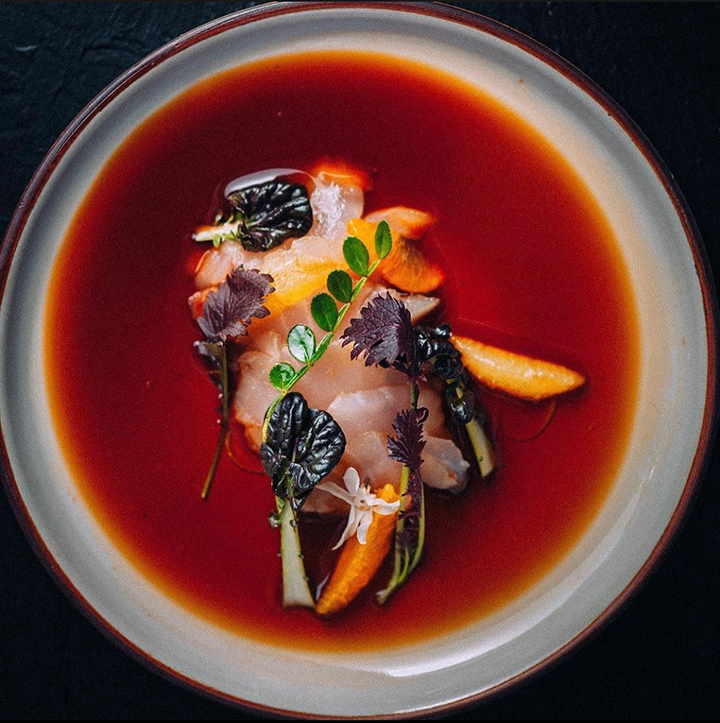
Thornyhead Crudo (citrus, aged shoyu, mustards, and peppercorn leaf) | Strateje Fourteen | Photo courtesy Keith Lord
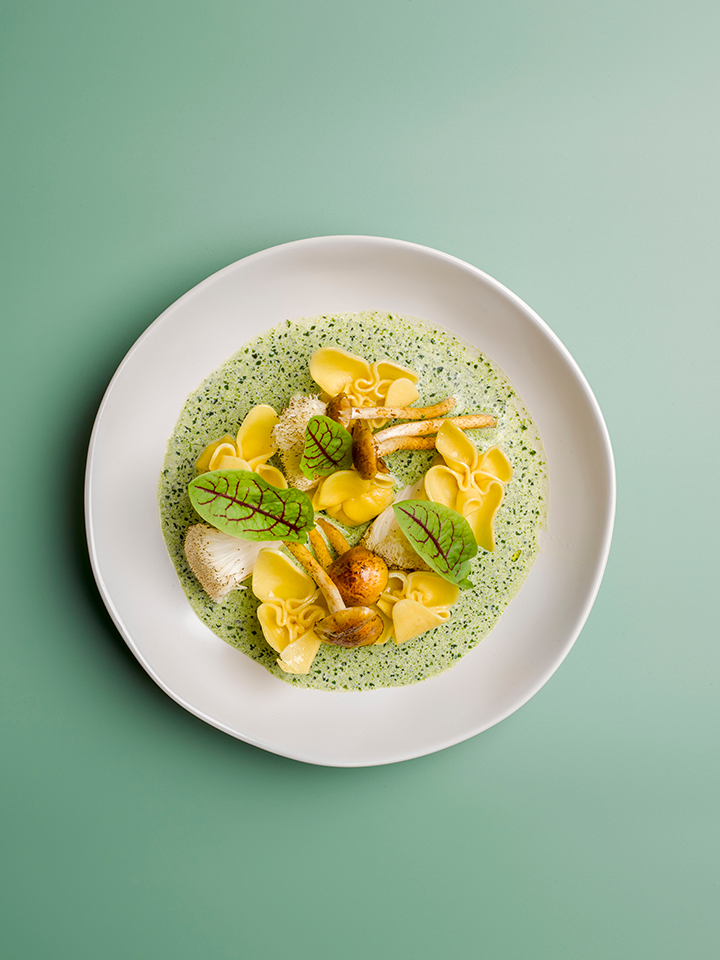
Plating pasta can be a true art form in itself, whether you choose the “nest” technique or a more casual plating. Experts encourage to keep close attention to the sauce as it should be on the top of the pasta, otherwise the sauce tends to fall to the bottom making the pasta look sloppy | Barilla | Photo courtesy Barilla

Tomato and warm ricotta | Brae Restaurant | Photo courtesy Colin Page
Stack
This plating style involves stacking ingredients on top of each other to create a visually striking presentation. This technique is ideal for dishes comprising multiple layers or components.
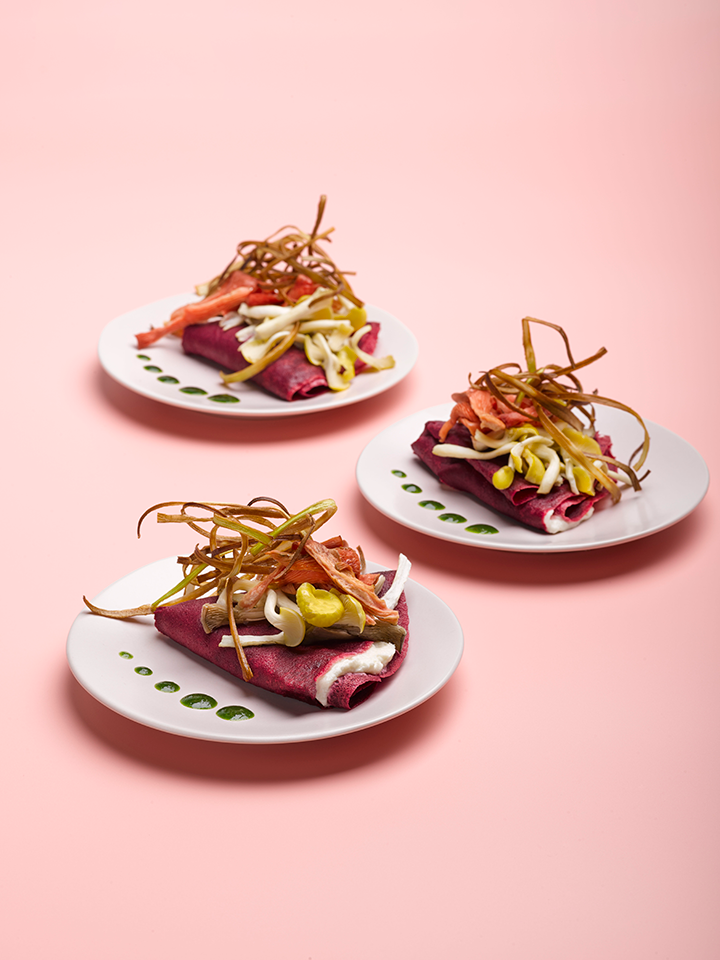
Beetroot crepes with chevre, local oyster mushroom salad, Thai basil puree, crispy leeks with chili threads | Eatertainment Events & Catering | Photo courtesy Bruce Gibson
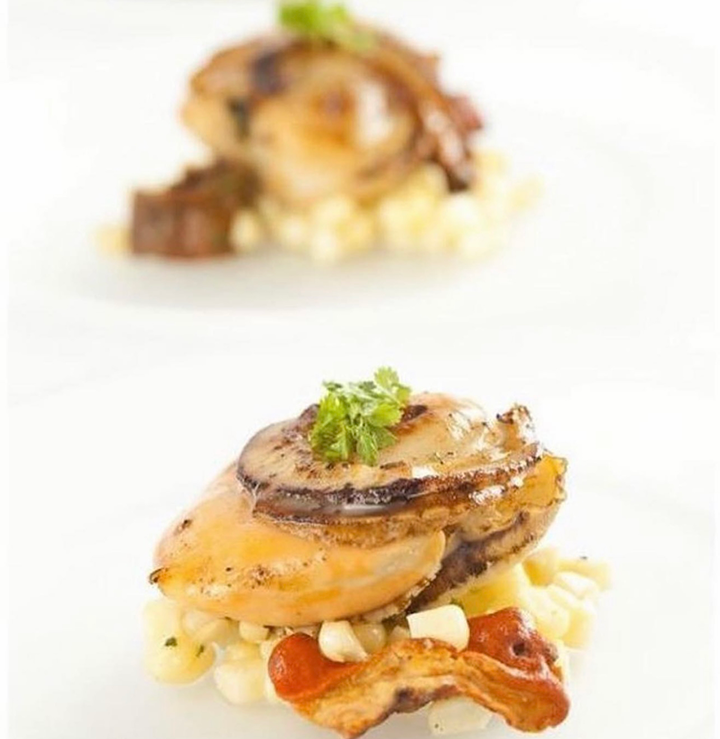
Hokkaido Scallop, Brentwood corn, lobster mushroom, Hobb’s bacon, butter, and chervil | Strateje Fourteen | Photo courtesy Keith Lord
Deconstructed
This plating style breaks down a dish into its components and presents them separately on the plate—allowing diners to experience each element of the dish individually rather than combining them.
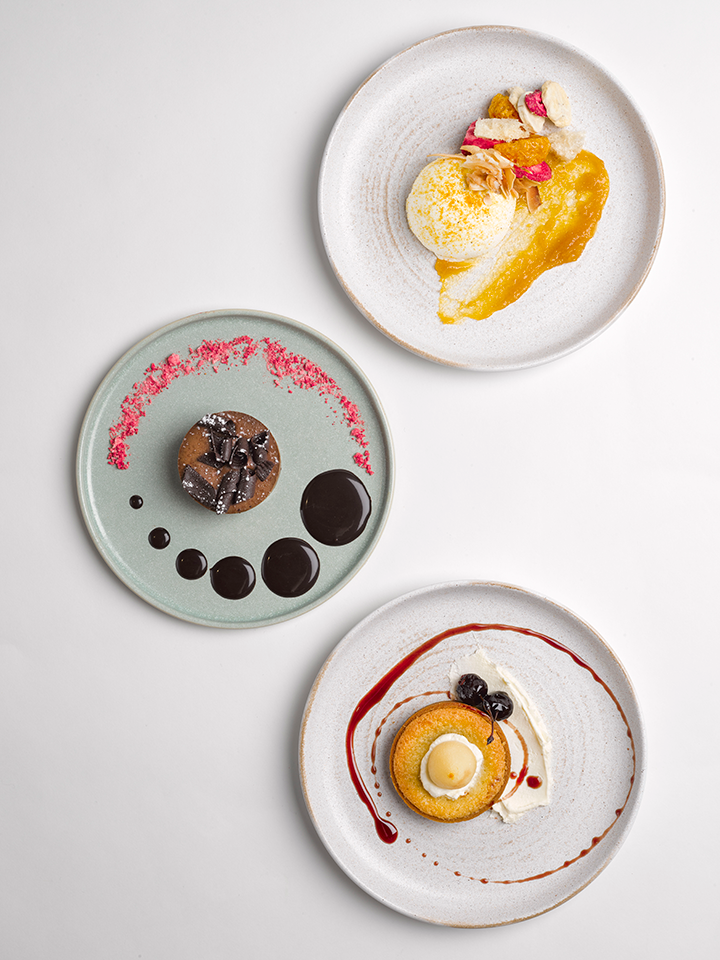
(From top) Coconut mousse & passionfruit coulis; Double Dark Chocolate Pyramid; Pear & Almond Tartlette | Eatertainment Events & Catering | Photo courtesy Bruce Gibson

Plum simmered with onions, honey, and cultured milk | Brae Restaurant | Photo courtesy Colin Page
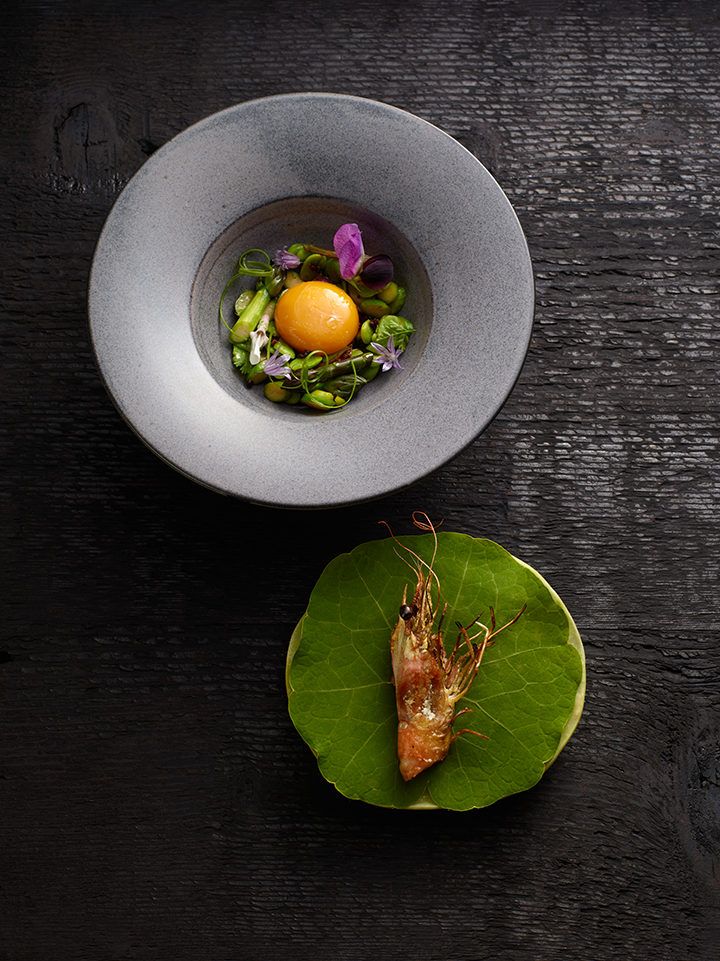
Prawn and kohlrabi taco | Brae Restaurant | Photo courtesy Colin Page
Landscape
This plating style involves arranging food on the plate to resemble a natural landscape or scene. For example, arrange a dish to resemble a garden or a mountain range. This style comes in very handy for dishes that feature a variety of different ingredients.
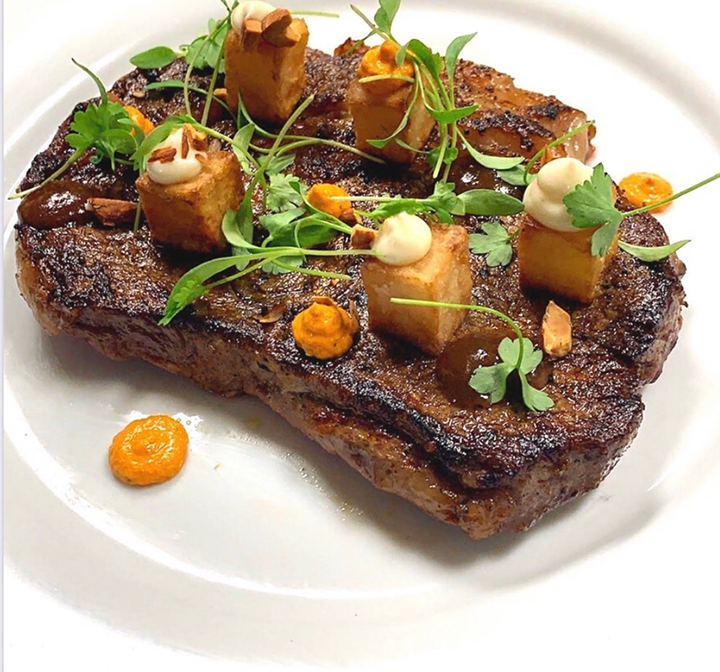
Cast Iron Roasted Rib Eye with patatas bravas, romesco, roasted garlic aioli, cut almonds, tiny cilantro and parsley, sherried onion demi glacé | Strateje Fourteen | Photo courtesy Keith Lord
Color Blocking
This plating style involves arranging food on the plate in blocks or stripes of different colors, creating a visually striking presentation pleasing to the eye and enhancing the dish’s flavors.
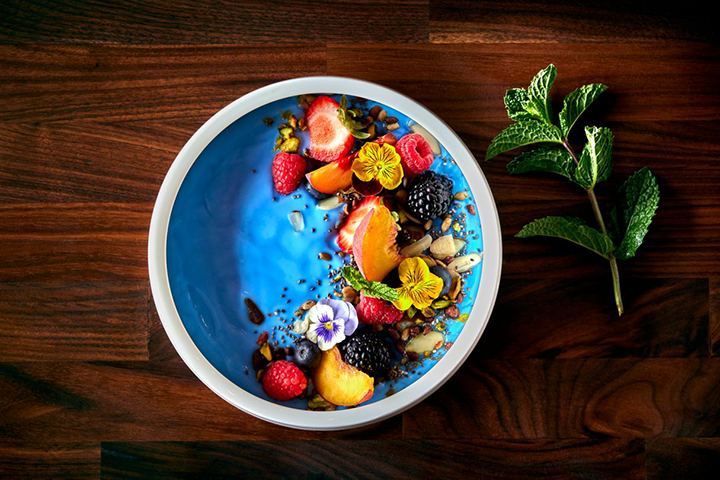
Spirulina parfait with fruit | Time & Temperature Innovation Kitchen | Photo courtesy JW Marriot Dessert Springs Resort & Spa
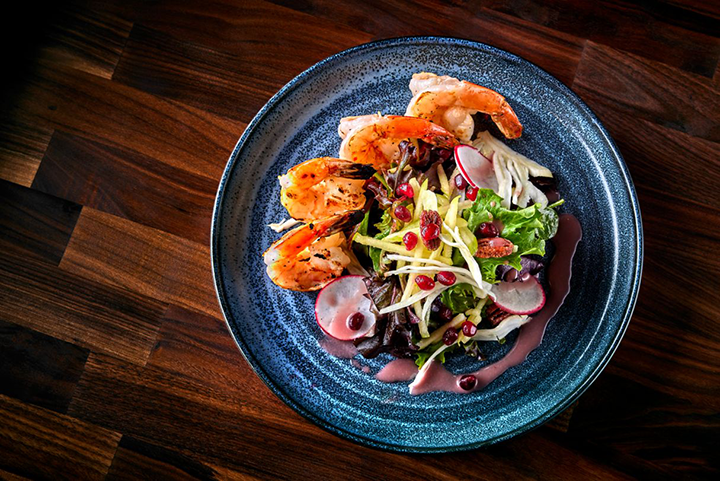
Market salad with shrimp | Time & Temperature Innovation Kitchen | Photo courtesy JW Marriot Dessert Springs Resort & Spa
Asymmetrical
This plating style involves arranging food on the plate in an asymmetrical or off-center manner, creating a visually interesting presentation that draws the eye and adds a sense of movement to the dish.
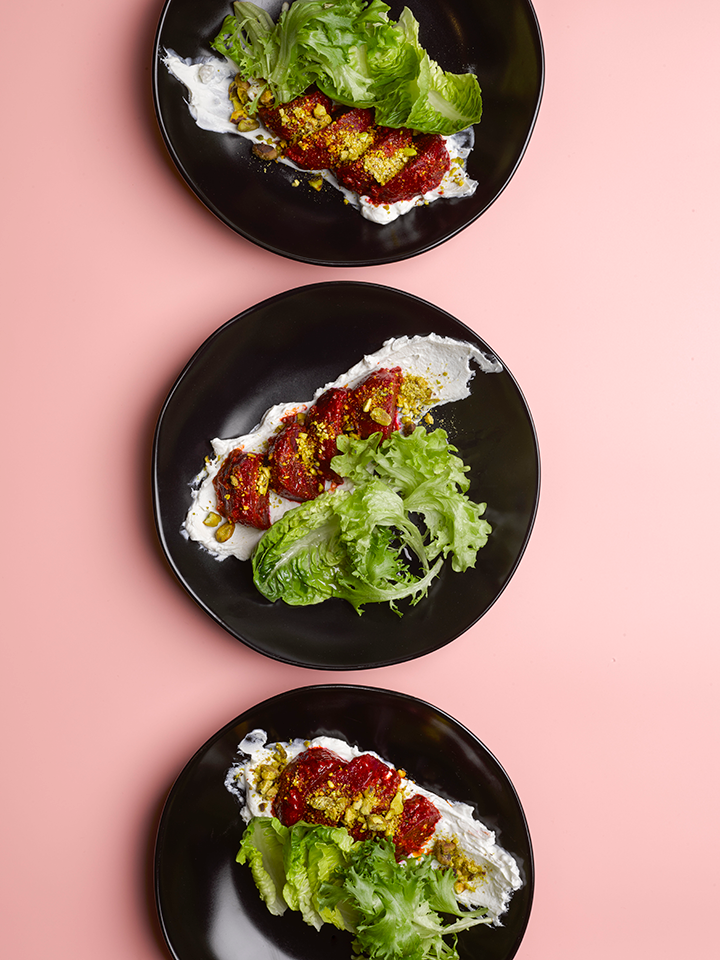
Harissa Roasted Beet Salad with yogurt cheese, blended Ontario lettuces, spiced praline, and extra virgin sunflower oil | Eatertainment Events & Catering | Photo courtesy Bruce Gibson
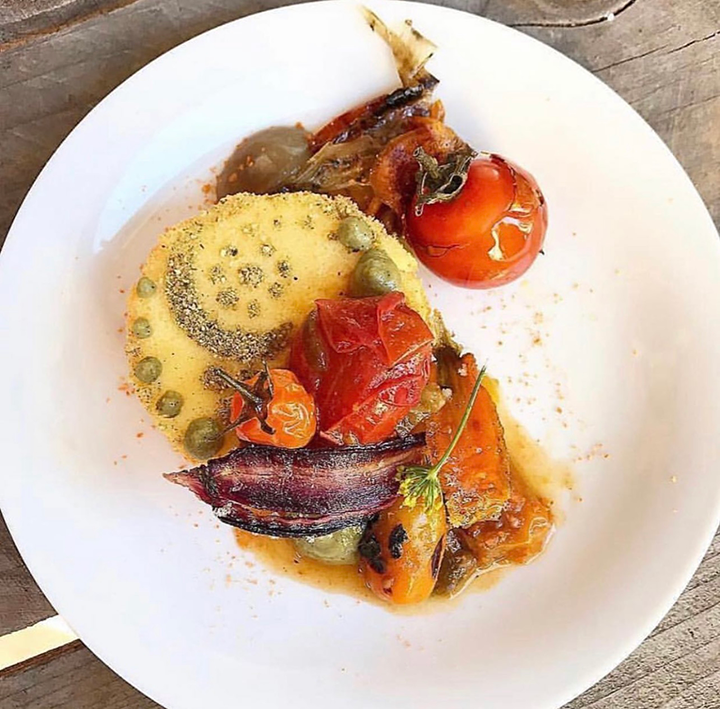
Japanese Carrot Cheesecake with candied cherry tomatoes, tomato pardon pepper jam, pardon custard, sweet-dried peels powder, and various crumbles | Strateje Fourteen | Photo courtesy Keith Lord
Interactive
This plating style involves presenting the food in a way that encourages interaction from the diner. For example, a dish may be presented with a small hammer and chisel to encourage diners to break open a shellfish, or you can pour sauce over a dish at the table.
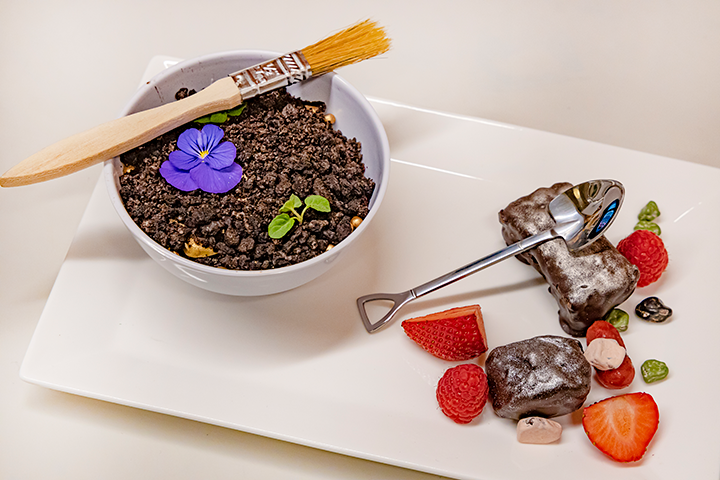
Fossil Discovery (chocolate “fossils” and edible rocks nestled underneath crushed up Oreo cookies). Guests brushed and “shoveled” away the “dirt” to find the hidden fossil. Photo courtesy Lazaro Llanes
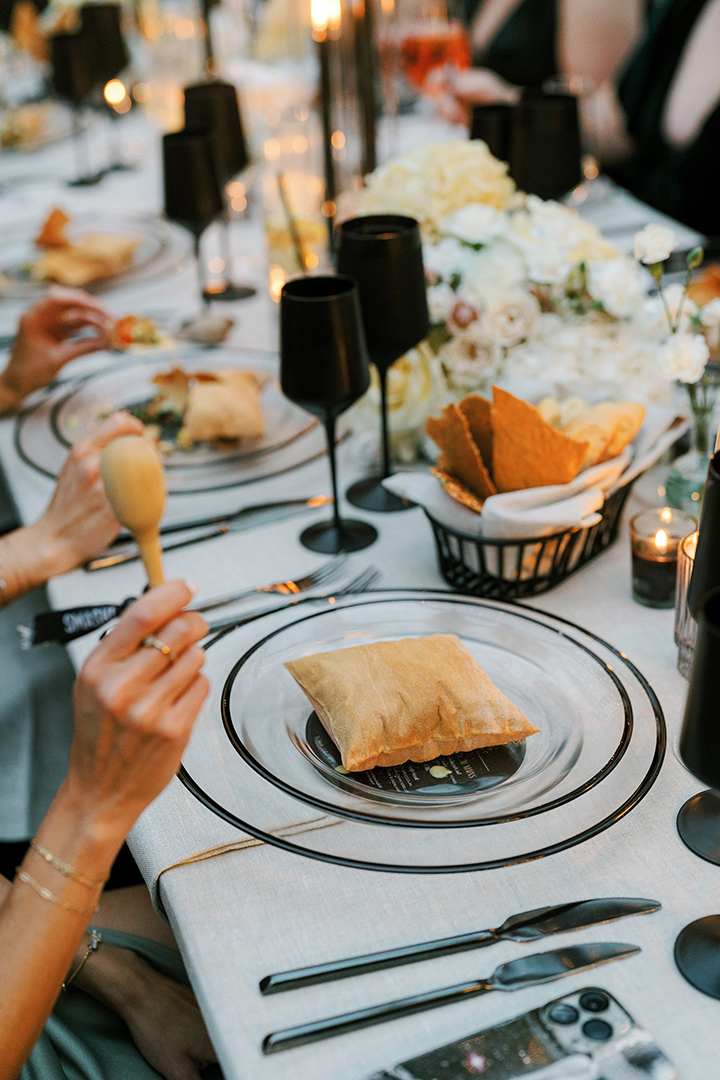
Guests use a mallet to crack into a dish from Pinch Food Design. Photo courtesy Stetten Wilson



